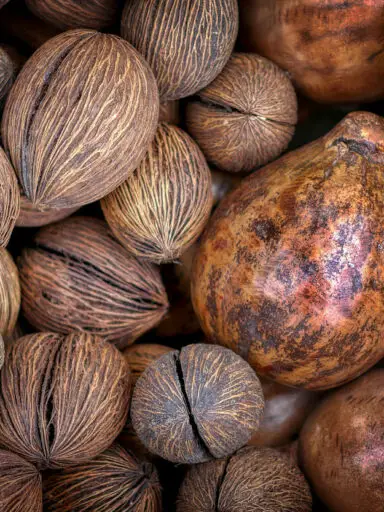The banana is a sweet starchy, energy-rich edible fruit. It is basically classified as a berry. The fruit comes in various sizes, colors, and textures. It is usually elongated and usually yellow in color when ripe.
It can be eaten raw or cooked. Usually, banana varieties for cooking may be called plantains or cooking plantains. The cooking plantains are usually less sweet in flavor and more firm in texture compared to the sweet variety also known as dessert banana.
Plantains are a staple food in many parts of tropical African, the Caribbean, and Southeast Asian regions.
The term banana is believed to have come from West Africa. It is a perennial herbaceous plant that grows well in moisture-rich and humid areas. It grows well in tropical regions and is available all year round. Mature banana plants can reach up to six meters in height.
The flower subsequently forms into a hanging bunch with up to 20 tiers carrying five to ten fruit each. The banana has protective skin that is usually not eaten by men.
Inside the protective skin is delicious, sweet, creamy-white edible flesh. Each fruit can range from two to eight inches in length depending on the variety.
Bananas start to decay quickly once ripened. It is therefore common to find mature bananas being harvested when still green and firm. This allows them to keep longer thereafter and facilitates handling transport. The firm bananas are less prone to being spoiled during the process as opposed to the soft ripe ones.
With that in mind, should you want to keep bananas longer in the home, you can buy the green ones which will take a few days to ripen. Should you desire to eat bananas immediately then you should buy those that are already ripe.
Ripe bananas are yellow and the skin is easy to peel. The bananas should not be mushy as this indicates fruit that is overripe.
Preparation of the Banana for Eating
Bananas may be washed before peeling, however, without washing, the peel protects the insides from dirt and germs. When peeling avoid touching the inner flesh. The fruit can be peeled by holding one end with one hand peeling off the skin on the opposite end. The peel should come right off.
While holding the banana on the outer end you can easily eat the sweet flesh starting from the peeled end. Bananas that are prepared as dessert or part of other dishes. peel and place the peeled banana into a bowl or plate and discard the peel.
When ready wash hands before handling the inner flesh to avoid transferring dirt or germs to the flesh from the skin. Banana flesh exposed to air for a period of time starts to turn and therefore it may be prudent to squeeze some lemon juice or pineapple juice over the flesh to keep its color.
Banana has many uses raw. It can be eaten as is, chopped, and added to fruit salad. It can also be used to make smoothie and cocktail mixes. It can be used in milkshakes, dessert dishes as well as juice. It can be used to make cake, pudding, pie dishes, casserole dishes, muffins, and fruit jam.
Cooked bananas come in different types depending on how it has been cooked. You can mash, grill, bake, fry, or boil bananas. Banana chips are usually made commercially and sold as a snack. The cooked fruit can be eaten as a vegetable mixed in vegetable stews or it can be eaten as the starch component in a dish.
Nutritional Benefits
Bananas are low in fat and contain 90 calories per 100 grams. They contain no cholesterol and are rich in anti-oxidants, carbohydrates, vitamins, and minerals. They are also rich in soluble dietary fiber.
Banana is a good source of pyridoxine and vitamin C. It holds some amounts of folates and pantothenic acid which are B complex vitamins. They are also rich in potassium, copper, magnesium, and manganese.



